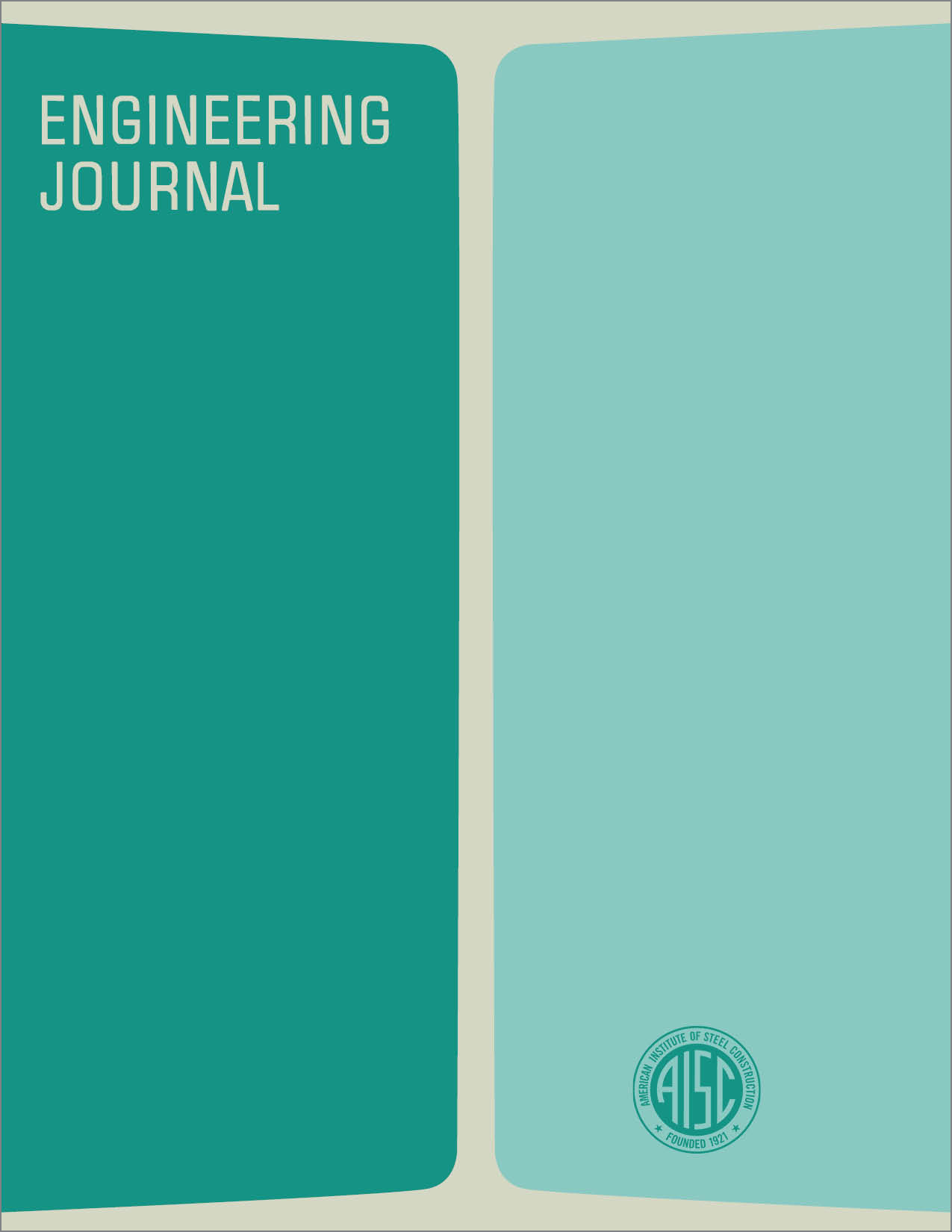Directional Moment Connections--A Proposed Design Method for Unbraced Steel Frames
DOI:
https://doi.org/10.62913/engj.v12i1.237Abstract
Present practice in both elastic and plastic design of unbraced frames often results in uneconomical structures. This is because both methods require fully rigid connections. As a result, columns must be designed to resist beam gravity moments and connections must be able to develop the full moment capacity of the girders. Unfortunately, columns are not efficient members when resisting moments and full moment connections are often expensive, especially if column stiffeners are required. This paper proposes a simple new design procedure which eliminates the need for fully rigid connections in unbraced frames. Based on a more realistic analysis of the loading-unloading behavior of beam-to-column connections, the procedure results in more efficient connections and columns and, at the same time, permits the girders to be utilized to their maximum strength and stiffness. This method also rationalizes the long established elastic design method of "flexible wind connections" (the apparently paradoxical design method whereby the girders are designed as simple beams, the connections are designed for wind moment only, and no additional moments are assumed to be induced in either the connection or column by gravity loads on the girder.) Included in this paper is a rational method for determining the effective length of columns in unbraced frames when the connections are designed for a moment capacity less than that of the girder.

